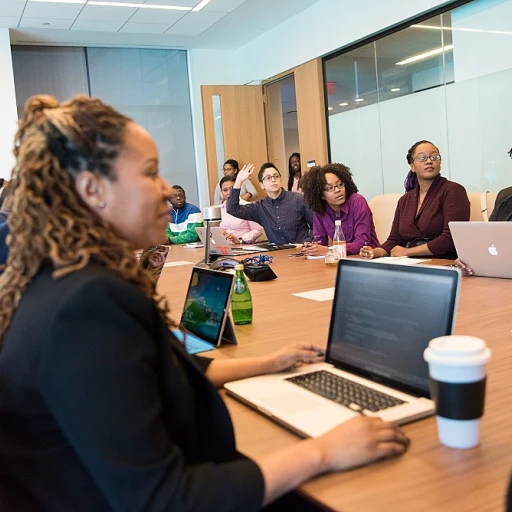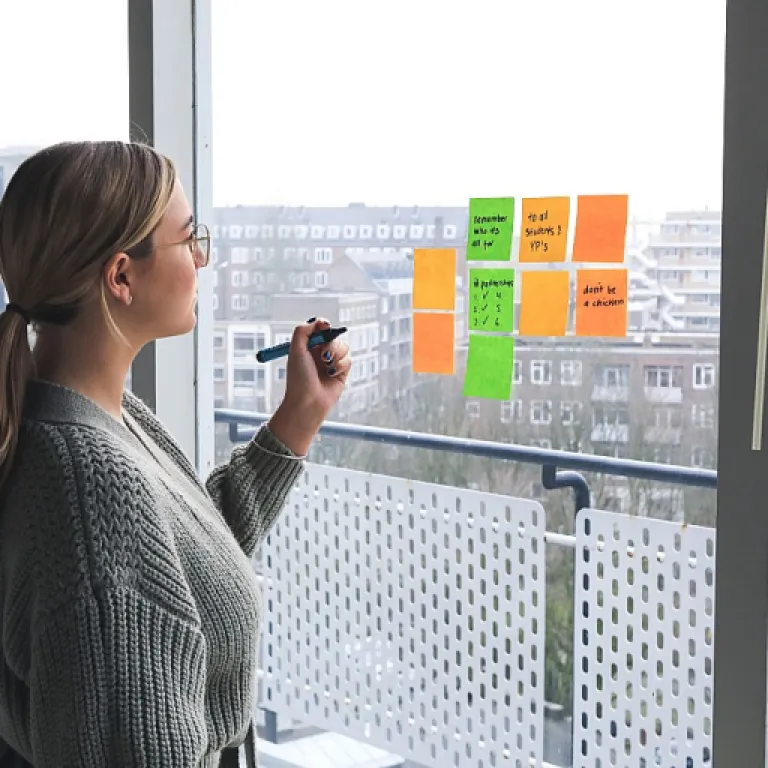
Understanding the Importance of Succession Planning
The Foundation of a Robust Future
In today's dynamic work environment, businesses cannot afford to overlook the significance of succession planning. This strategic approach not only assures a seamless continuation of operations when an employee leaves but also prepares the organization for unforeseen changes in key roles. Succession planning ensures that a company has a pipeline of skilled employees ready to step into critical positions, helping avoid disruptions and maintaining productivity.
By having a clear succession plan in place, organizations can effectively backfill positions when needed, rather than scrambling at the last minute to fill a vacant position. This proactive method involves identifying potential successors and assessing their readiness to take on new responsibilities, ultimately strengthening the leadership bench and ensuring the company is equipped for both short-term and long-term growth.
The process not only involves evaluating current employees but also developing a comprehensive backfill plan that incorporates employee promotion and professional development opportunities. Successful succession planning requires understanding which positions are vital and cannot be left unoccupied for too long, as these roles can significantly impact the business's performance and success.
In essence, the importance of succession planning cannot be understated, as it serves as the bedrock for employee retention, talent development, and organizational resilience in an ever-evolving business landscape.
Identifying Key Roles and Potential Successors
Pinpointing Critical Roles and Successors
Recognizing which roles in an organization are crucial is the backbone of any effective succession planning strategy. It’s essential to zero in on these positions to ensure continuity, particularly when key employees leave. Understanding which roles are vital involves evaluating how each position impacts the company's goals and overall success. Key roles often include top leadership positions, as well as niche roles requiring specialized skills. Identifying potential successors from within can be highly advantageous for a company. This approach, known as internal backfilling, leverages the current employees' understanding of the company's culture and operations. It also demonstrates a commitment to employee development and retention. Identifying talent for these crucial roles involves assessing the skills and performance of existing team members, considering their readiness to step into new positions. Employee promotion from within fosters a sense of loyalty and investment in the team's success. The path to identifying successors is multifaceted. It's important to create a clear job description for each critical role, defining the specific skills and experience required. Regular assessments of team members’ capabilities and career interests can highlight those ready for increased responsibility, helping organizations build a reliable backfill plan. To address both short and long term needs, proactive sourcing of talent should be an ongoing effort, ensuring that backfill recruiting is seamless and efficient. Designing a comprehensive succession plan also requires transparency in communication. Engaging staff in discussions about potential career development opportunities can inspire motivation and clarify expectations. Providing opportunities for cross-training enables team members to acquire a broader skill set, preparing them for transitions into new roles when the time comes. For further insights on creating detailed succession plans, check out The Ultimate Guide to Creating a Succession Plan Sample.Developing a Talent Pipeline
Building a Strong Talent Reservoir
Creating a robust talent pipeline is a vital strategy to ensure your organization is prepared for backfilling critical roles when the need arises. This step not only supports the reduction of disruptions caused by an employee leaving their position, but also aligns with long-term strategic goals. Here’s how to systematically develop this important asset:
Begin by analyzing the existing job descriptions for key roles and identify the skills and competencies required. This will guide you in recognizing the internal employees who possess high potential and can be groomed to fill these roles over time. A blend of professional development initiatives and cross-training opportunities facilitates the development of these capabilities. This approach encourages employee promotion from within, securing the organization's best interests.
Proactive sourcing and refining your hiring practices are also critical elements in sustaining an effective talent reservoir. With a comprehensive backfill plan in place, your team can swiftly react to any vacant position by having a shortlist of qualified current employees and external candidates ready. Ensuring that your systems support both immediate and strategic backfill recruiting will help in maintaining seamless workflow continuity.
Moreover, incorporating a mechanism to periodically evaluate your talent pool ensures that it aligns with evolving organizational needs. Through development programs and performance evaluations, your organization can consistently gauge the progress of identified potential successors.
By focusing on these best practices, organizations create a sustainable cycle of talent readiness, empowering team members to excel while ensuring any backfill position is filled efficiently. Developing and refining these strategies is integral in ensuring your organization thrives even amidst transitional backfilling position challenges.
For more on crafting guidelines for team dynamics, explore our dedicated resources that offer insights into effective backfill strategies.
Training and Development Programs
Enabling Growth Through Learning and Development
Equipping your employees for future roles involves more than just identifying potential successors. Developing a comprehensive training and development program is pivotal for a smooth transition when backfilling a position. It ensures that team members possess the necessary skills to step into a new role effectively, minimizing downtime and maintaining productivity within the team.
Employee promotion from within the organization not only retains talent but also aligns employee growth with the company’s strategic goals. Offering opportunities for professional development encourages current employees to invest in their career paths, which can be beneficial for both short-term and long-term planning.
- Cross Training: Cross training is an effective way to prepare for future vacancies by allowing employees to learn skills beyond their current job description. This flexibility helps to pick up the slack when a team member shifts roles or leaves the organization.
- Mentoring Programs: Developing mentorship within the company allows emerging leaders to learn from more experienced employees, passing down crucial knowledge that prepares them for future leadership roles.
- Workshops and Seminars: Providing regular workshops focuses on enhancing specific skills necessary for vacant positions. This proactive sourcing of talent development prepares employees ahead of time.
A well-thought-out development plan includes time-bound goals and clear expectations, aligning with the organization's backfill recruiting strategy. A robust system acknowledges the importance of internal capacity building, reinforcing the overall backfill plan by empowering employees to successfully transition into new roles when needed.
Evaluating and Adjusting Succession Plans
Regular Assessment and Strategy Refinement
In the ever-evolving landscape of organizational dynamics, evaluating and adjusting succession plans is critical. Regular assessments allow a company to align its talent strategy with its overarching goals and operational needs.
Firstly, a consistent review process is essential. This involves assessing skills, roles, and the readiness of potential successors. Engaging with department heads and key team members can help ensure that the evaluation process is comprehensive. Their insights into the evolving nature of work and employee capabilities can be invaluable.
Moreover, gathering feedback from current employees on the succession plan can identify gaps or areas in need of improvement. Employees closest to the vacant position or those with cross-training experience can provide valuable context and feedback on whether the plan serves the team's long-term needs.
It's equally important to consider the critical metrics of success and areas for development. By tracking and reviewing performance data, companies can adjust their backfill plan to address potential weaknesses or strengths that emerge over time. This data-driven approach ensures the succession plan remains aligned with the company’s objectives and employee development opportunities.
Finally, ensure that there is a system for agility in case of sudden employee departures. By integrating backfill recruiting and proactive sourcing in the plan, organizations can reduce the time taken to fill vacant positions. This agility not only minimizes disruption but also ensures continuity of operations, safeguarding the organization's productivity.
Taking these steps will not only reinforce the effectiveness of your succession planning but also prepare your organization for future challenges, ensuring that you can successfully backfill positions with the right talent.
Overcoming Challenges in Backfilling Positions
Addressing Common Obstacles in Filling Vacant Positions
Backfilling positions can be a complex task, often fraught with challenges that require strategic planning and execution. When an employee leaves, the organization must act swiftly to ensure that the vacant position does not disrupt the workflow. Here are some common challenges and strategies to overcome them:
- Time Constraints: The urgency to fill a role can lead to hasty decisions. To mitigate this, having a backfill plan in place is crucial. Proactive sourcing and maintaining a talent pipeline can help reduce the time to hire.
- Skills Gap: Identifying the right skills needed for the position is essential. Regular training and development programs can prepare current employees to step into new roles, ensuring they have the necessary skills.
- Internal vs. External Hiring: Deciding whether to promote from within or hire externally can be challenging. Internal promotions can boost morale and retain talent, while external hires might bring fresh perspectives. A balanced approach, considering the specific needs of the role, is often best.
- Employee Promotion: Promoting an employee can leave another gap in the organization. Cross-training team members can help pick up the slack in the short term while a more permanent solution is found.
- Job Description Clarity: A well-defined job description is vital for attracting the right candidates. It should clearly outline the role, responsibilities, and required skills to ensure alignment with the organization's needs.
By understanding these challenges and implementing best practices, companies can effectively manage the transition and maintain productivity. Evaluating and adjusting succession plans regularly will ensure they remain relevant and effective in addressing the organization's evolving needs.












